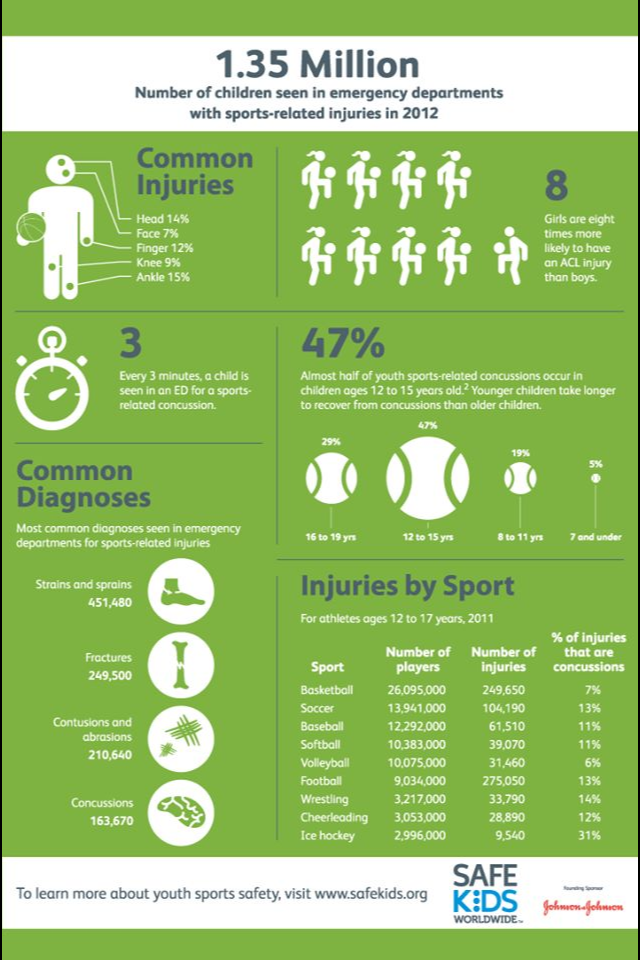Sports Injuries
We are your Sports Injury Experts!
Our Certified Athletic Trainers can asses any non-emergency sports injury and determine the appropriate plan of action. We can determine: 1) if your injury warrants a visit to an orthopedic physician for x-rays, or more advanced imaging. 2) if RICE (Rest, Ice, Compression, elevation) needs to be initiated immediately, 3) if manual therapy techniques can be started to decrease pain and improve healing time or 4) what you may have thought was an injury was actually just a spasm of a muscle, resulting in biomechanical imbalances, and some physical therapy techniques can take care of your injury very quickly.
At Efficient Movement, it is our mission to get down to the cause of the sports injury and prevent future injuries from occurring. Many repeat sports injuries are caused by repetitive overuse strain on structures, such as tendons or ligaments inserting around the knee, shoulder, elbow and back. These repetitive strains, caused by the imbalances or mal-aligned joint positions with re-directed forces, result in chronic strain on a focused area of the body (i.e. knee pain, patella tendonitis, osgood schlatters, golfer’s elbow, tennis elbow, low back pain, etc). Efficient Movement adopts Gray Cook’s three Rs concept in rehabilitation of sports injuries and sports performance exercises; RESET, REINFORCE, RELOAD. We reset your body’s “alignment” per se and then reinforce the muscles that would help hold this “alignment”. The final stage is to reload with sport-specific movement patterns of jumping, landing, cutting and with resistance.
Some common sports injuries we treat often are:
1) Knee Pain (Chronic or Acute)
– Patella Tendonitis
– Patella Pain Syndrome / Patella Tracking Disorder
– Non-surgical or Post-surgical ligament sprains (i.e. MCL, ACL)
2) Low Back Pain
– Sacral-Ilium (SI) Immobility
– Over-reactive Hip Flexors
3) Hip/Thigh Pain
– Tensor fasciae latae (TFL) tightness
– Anterior/Posterior Rotated Pelvis
– Hamstring spasms/strains
– Quadricep & Hipflexor spasms/strains
4) Shoulder Pain
– Biceps Tendonitis
– Rotator Cuff Impingement
5) Lower Leg Pain
– Calf Strains/Spasms
– Achilles Strain
– Shin Pain
6) Foot Pain
Patella Pain Syndrome
This is one of the most common diagnosis we see in our practice. Patella Pain Syndrome, also known as Patella Tracking Disorder, tends to be most common in teenage girls, but we have also seen it in athletes of all ages and genders.
Patella Pain Syndrome is pain caused by the patella (aka Knee Cap) coming in contact with the femoral bone (aka upper leg bone) with bending and straightening of the knee. This abnormal tracking of the patella results in chronic or occasional jolts of pain throughout front/outside area of the knee joint when the knee is required to bend and straighten in walking, running, sitting, etc. The reason for this abnormal tracking is due to an imbalance of muscles that surround the patella, as well as the hip and foot. The muscles that are commonly involved in causing patella pain syndrome are: Tight Vastus Lateralis quadricep Muscle, Weak Vastus Medialis Oblique (VMO), weak glute-medius muscles, and tight hip flexor muscles.
This image shows the position of the knee cap when contacting the femur bone. When this contact occurs, the bone-on-bone compression is what causes the knee pain. The imbalances of the muscles around the knee (quadriceps & IT Band) are what cause the knee cap to pull to the outside. When you walk, run, sit down or stand, bending and straightening of your knee joint is essential. Therefore, the knee cap continually rubs along the femur bone, causing a pretty significant “ache” in the knee and sometimes jolts of sharp pain periodically.
The most important muscles around the knee that have to be balanced are the Vastus Lateralis and the Vastus Medialis Obliques (VMO). The Vastus Lateralis is a a larger quadricep muscle and is easily overdeveloped than the VMO. Therefore, focus usually needs to be placed on increasing flexibility in the Vastus Lateralis and increasing strength in the VMO. When this occurs, the patella will not rub on the femur bone, and therefore pain will subside.






